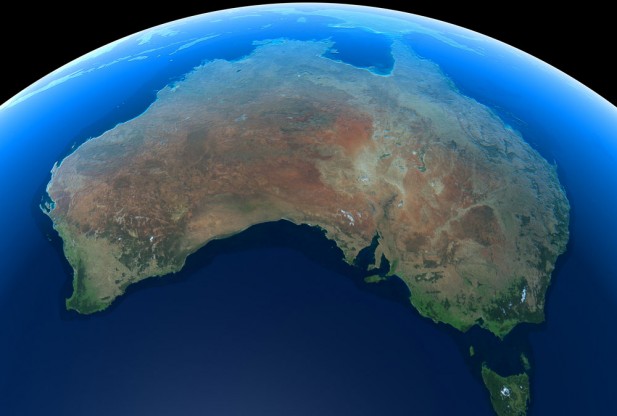
© Joao Virissimo/Shutterstock
A massive
asteroid that crashed into Earth left behind a large impact crater in Australia and changed the entire landscape of the planet, scientists from the Australian National University (
ANU) and
University of Queensland claim in a recently-published study.
According to Stuart Gary of ABC News in Australia, the impact zone is centered in the East Warburton Basin in the northeastern part of South Australia.
It was created by an asteroid believed to be more than twelve miles (20 km) wide that crashed into the planet sometime between 360 million and 298 million years ago, the authors reported in the latest edition of the journal
Tectonophysics.
Dr. Andrew Glikson, a visiting fellow to the ANU Planetary Science Institute and co-author of the study,
told Sunanda Creagh, editor of
The Conservation, the impact zone had been buried under more than two miles of dirt.
"It's significant because it's so large. It's the third largest impact terrain anywhere on Earth found to date," he told Creagh. "It's likely to be part of a particular cluster that was linked with a mass extinction event at that time."
Glikson and his colleagues - Dr. John Fitzgerald and Dr. Erdinc Saygin of ANU and Dr. Tonguc Uysal of the University of Queensland - studied quartz grains that had been drawn from more than 200 samples, seeking seismic anomalies far below the Earth's surface, Creagh explained.
They also believe the asteroid responsible for the impact zone could have split in half before actually colliding with the Earth's surface. Regardless, it likely had a tremendous impact throughout the planet.
"The dust and
greenhouse gases released from the crater, the seismic shock and the initial fireball would have incinerated large parts of the earth,"
Glikson told Reuters reporter Michael Sin. "The greenhouse gases would stay in the atmosphere for tens of thousands of years."
"The 280 to 360 million years old impact window places this in the same epoch as the late Devonian mass extinction event," he added in an interview with Gray. "There are indications of mass extinction at this time caused by an impact winter, with the huge flash of the asteroid, major fires and seismic events with magnitudes of 10, 11 and 12, which would have disrupted habitats."

Reader Comments
to our Newsletter